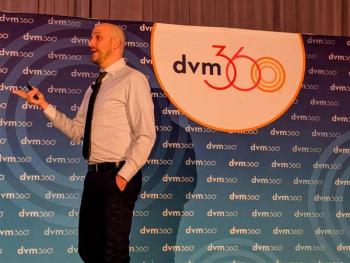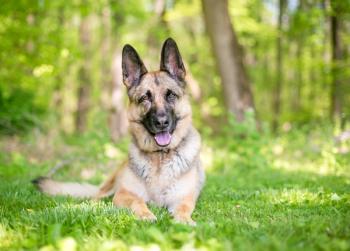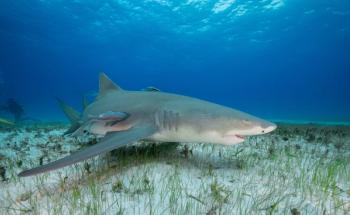
Reproductive ultrasonography in females: Normal studies (Proceedings)
Diagnostic ultrasonography has become an important component of small animal theriogenology since its introduction to practice in 1978.
Generally, coping with disorders in small animal reproduction, is a rewarding subspecialty in veterinary medicine. Clients owning pets with urogenital problems are usually very motivated to achieve resolution. Although demanding of the clinician's time and expertise, the breeder client tends to be very loyal and compliant. A good reproductive practice generates its own referrals, and usually is quite busy. Obstetrics and pediatrics are undeniably rewarding parts of the specialty for veterinarians and their staff. Reproductive practice incorporates the interesting fields of physiology, endocrinology, embryology, genetics, metabolism, nutrition, pediatric and maternal critical care, anesthesia, pharmacology and anatomy. The field is uniquely requires expertise in medicine, ultrasonography and surgery.
Diagnostic ultrasonography has become an important component of small animal theriogenology since its introduction to practice in 1978. The use of ultrasound as a tool in canine and feline reproduction has expanded from its initial role in early pregnancy diagnosis to its current use in the approach to clinical reproduction (obstetrics, infertility, urogenital disorders and pediatrics). The availability of ultrasonography in veterinary practice increased as reasonably priced, better quality diagnostic ultrasound equipment became commercially available to veterinarians. Ultrasonography has become a standard of practice in many communities, with diagnostic ultrasound available at primary private practices, via readily accessible referral centers or from mobile specialty practices. Veterinary school curricula and continuing education courses now commonly include ultrasonography, providing students and graduates with the training to perform and interpret diagnostic ultrasound. Recent developments in scanhead technology have allowed improved visualization of reproductive anatomy.
Normal Female Reproductive Tract: Bitch and Queen
The normal uterus is best located by scanning transversely between the urinary bladder and the colon. The cervix and uterine body are seen as a continuous hypoechoic round structure dorsal to the anechoic urinary bladder and ventral to the hyperechoic, crescent shaped colon. Thinking of the urinary bladder as a clock face, the uterine body will be located at 5 o'clock or 7 o'clock. The full urinary bladder acts as an acoustic window to improve imaging the uterus. The cervix is located slightly cranial to the bladder trigone and is best seen when under hormonal influence rather than during anestrus. The cervix is an oblique hyperechoic linear structure in the sagittal view. The uterine body is smaller in diameter than the cervix and usually extends to the cranial one third of the bladder. The bifurcation of the uterus into the uterine horns can sometimes be imaged; the horns are typically difficult to image unless enlarged due to hormonal influence during the estrous cycle, pregnancy, or from pathology. The uterus is composed of three layers: the mucosa, the muscularis and the serosa. The endometrium and myometrium cannot usually be differentiated in the normal state. The uterine lumen is generally not seen, although it may be visible as a bright echogenic central area, representing a small amount of intraluminal mucus, or as a hypoechoic to anechoic region if fluid is present.
The normal ovaries are located caudal and slightly lateral to the caudal poles of the ipsilateral kidneys. Their location can be facilitated by the appearance of the artifactual distal enhancement dorsal to each ovary. The appearance of the ovaries varies with stages of the estrous cycle. Normal ovarian dimensions have been established for average sized dogs. During anestrus, the ovaries appear as small oval to bean shaped structures with a homogenous echogenicity similar to the renal cortex. The cortex and medulla are not usually differentiated in the bitch and queen. Multiple anechoic or hypoechoic cyst like structures can be visualized in the ovarian parenchyma during folliculogenesis, larger cystic structures are present during the luteal phase.
Ovulation Timing
Serial evaluation of the ovaries (3 times daily!) can be used to detect changes suggesting ovulation has occurred. During proestrus, multiple anechoic follicular cystic structures can be identified, enlarging with time (up to >1 cm in diameter). These structures ultimately have distinct walls and anechoic fluid centers with distal enhancement. The surface of the ovary may become irregular or lumpy. The anechoic fluid filled follicles acutely become hypoechoic to hyperechoic corpora hemorrhagica (CH) at the time of ovulation, progressing over several days to hypoechoic corpora lutea (CL). The ovarian follicles do not collapse in the bitch and queen. During diestrus the ovaries may be lobular, the corpora lutea are obvious hypoechoic structures of variable size. Precise ovulation timing is best accomplished with a combination of techniques: vaginal cytology, serum progesterone levels, LH assays, vaginoscopy, with ultrasound providing confirmatory information.
Pregnancy Diagnosis
Pregnancy detection by abdominal palpation (at approximately 30 gestational days) or radiography (43-46+ days post LH peak, the later the better) can confirm the presence of fetuses at these points in time. Prior to fetal skeletal mineralization, other causes for uterine enlargement cannot be ruled out radiographically. Radiography cannot be used to assess fetal viability in a timely fashion. Once profound post mortem changes have occurred; radiography can detect intra-fetal gas accumulation or abnormal skeletal arrangement suggesting fetal death. Early fetal resorption cannot be detected radiographically.
Definite ultrasonographic diagnosis of pregnancy in the queen based on the appearance of a "fetal pole" can be made at 15-17 days post coitus, although gravid uterine enlargement (4-14 days) and the presence of a gestational sac (11-14 days) can be detected even earlier. Ultrasonographic detection of the canine blastocyst (a 2-3 millimeter spherical hypoechoic structure surrounded by a hyperechoic rim within the uterus) occurs at 19-20 days post LH peak. Ultrasonography permits evaluation of early fetal cardiac motion (21-22 days post LH peak), fetal movement (31-32 days post LH peak) and the fetal heart rate, enabling assessment of viability. By 30 days gestation (30 days after the LH surge) pregnancy diagnosis with ultrasonography is straightforward.
Fetal age determination by ultrasonography is accomplished in two ways: 1. the first appearance of visible structures and 2. the measurement of certain parameters. Predicting fetal age by noting the first appearance of visible structures corresponding to gestational length is often more accurate than measurements. Measurements such as the gestational sac diameter, fetal occipitosacral (crown-rump) length and fetal skull (biparietal) diameter can be obtained ultrasonographically, relate closely to fetal age, and permit estimation of gestational length and parturition dates, especially useful if ovulation timing was not performed. Variation in breed size (especially in the dog) and individual variation in measuring technique are sources of inaccuracy in predicting fetal age with ultrasound. Ultrasonography is less accurate than radiography in estimating litter size, particularly later in gestation, due to its dynamic nature. Keep in mind that fetal resorption or abortion can alter litter size after early ultrasound estimates are made.
Table 1
Formulas to Predict Gestational Age and Days before Parturition in the Dog and Cat
Gestational age (GA) is based on days post luteinizing hormone (LH) surge in the dog and days post breeding in the cat. Gestational sac diameter (GSD), crown-rump length (CRL), head diameter (HD), and body diameter (BD) measurements are in centimeters. Days before parturition (DBP) is based on 65 ± 1 days post LH surge in the dog and 61 days post breeding in the cat.
(Data modified from Nyland et al.)
Newsletter
From exam room tips to practice management insights, get trusted veterinary news delivered straight to your inbox—subscribe to dvm360.






